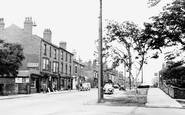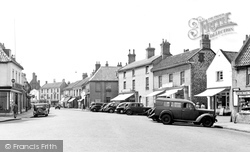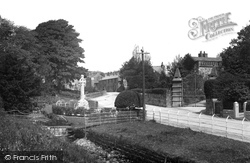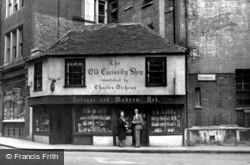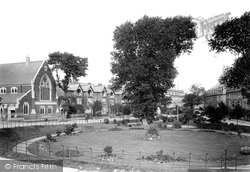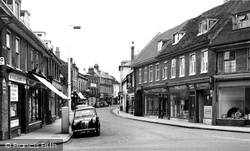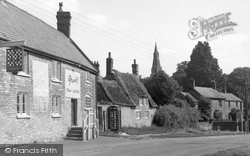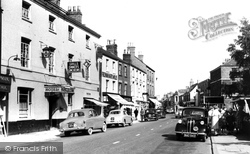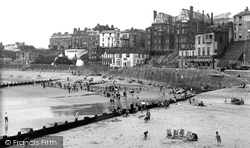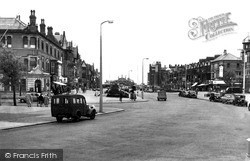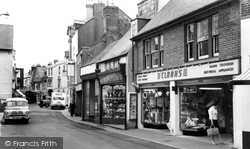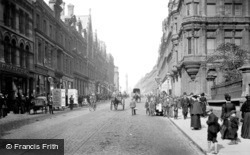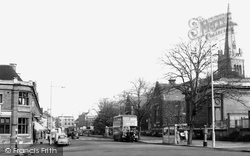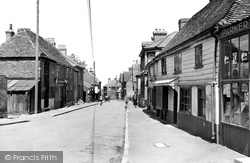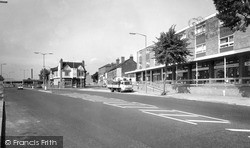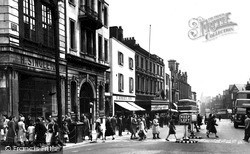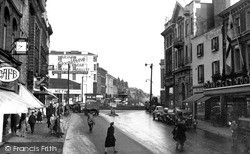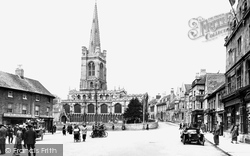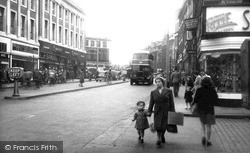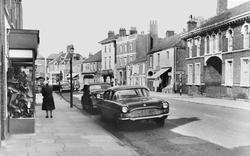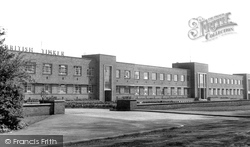Photos
68 photos found. Showing results 181 to 68.
Maps
73 maps found.
Books
Sorry, no books were found that related to your search.
Memories
982 memories found. Showing results 91 to 100.
A Happy Childhood
I lived in Jubilee Cottages in Nethercote with mum and dad. My dad, Charlie Wilson, collected milk from the farms in the area, his lorry being based at Swepstone Dairy. Mum, Florence, worked in the dairy making Stilton ...Read more
A memory of Newton Burgoland in 1955 by
How Good Barking Was In The 1950s
I was born in Shirley Gardens in 1935, right opposite Barking Park where I spent most of my childhood at Barking open air lido. What a magnificent place that was! My father was a policeman in Barking so we always ...Read more
A memory of Barking by
Eastwood Nottinghamshire
I lived with my grandmother (Elizabeth Jones), mother and sister at 72 Church Street Eastwood until I was about 7 years old (1956). My grandmother owned 4 (possibly 5) cottages in a row (ours being number 72) in Church ...Read more
A memory of Eastwood in 1954 by
Happy Days
I was born in 1953 and lived in Nelson until 1978 when I moved to Scotland with my husband. I've lived in Hampshire for 26 years now. I used to live in High St and from the early 60s in Ashgrove Tce, by the bus station. The ...Read more
A memory of Nelson by
I Lived In Midford
The family moved to Midford when I was 15 (1966)... We lived in The Laurels, as you go down Midford hill heading away from Bath our house was to your right over the valley.... I used to work in Bath (David Gregs) and rode a ...Read more
A memory of Midford by
A Wartime Child
I was born in 1935 at 25 Cambridge Road, maiden name Lee. There were six of us, parents, 2 older sisters, Beryl and Gwen, and grandmother. I remember many of the shops from the late 30's to the early 50's when we moved to ...Read more
A memory of North Harrow in 1930 by
Working At Rank Xerox
As a 16-year-old, I started work in the wages office of Rank Xerox. There were 6 of us in the office, the boss being Fred Pearce. The other colleagues were Roger Dymond, Mary Evans, Connie Waits, Jean Short and myself. ...Read more
A memory of Mitcheldean in 1958 by
A Day At The Seaside Littlehampton C 1955
I cannot remember how old I was when we started going to the south coast of England for a Sunday trip, but it was when my father sold his Norton motorbike and bought a Golden Flash with a sidecar ...Read more
A memory of Littlehampton in 1955 by
Le Fevers And Coo Op Denson 'winkle Pickers'
I went to Gillingham Technical School in Green Street and at the end of the school day ran down Gardiner Street, making a left turn into Gillingham High Street. This picture shows my homeward view with ...Read more
A memory of Gillingham in 1960 by
Growing Up
I was born in the former Mechanics Institute in Derwent Street, Blackhill in 1946 where my grandfather was the caretaker. My name was Ann Wall and my grandparents' name was Redshaw. My mother lived with my grandparents in the ...Read more
A memory of Blackhill in 1946 by
Captions
267 captions found. Showing results 217 to 240.
The first shop on the right belonged to Mr Strutt, who sold many things; he also ran a taxi business.
Although the smithy is now a private house, older villagers recall the First World War and how the blacksmith was recruited on one day a week to make horse shoes for the war effort.
This building survives because it is thought to be the premises of Little Nell's grandfather in Charles Dickens's novel 'The Old Curiosity Shop'.
Looking from the Hall (or the Palace Avenue Theatre) through the gardens, we can see Norton's and Welton's shoe shops.
On the right, we have W J Roberts, a shoe repairer, and next to him is Philpott's, the house furnisher.
Boot and shoe manufacturing led to the expansion of the village in the late 19th century, as it did in many Northamptonshire villages in this area.
The Chequers Hotel (left) is still in business, but the Freeman, Hardy & Willis shoe shop next door has gone - the building is now used by Eastern Delight.
The first shop on the right belonged to Mr Strutt, who sold many things; he also ran a taxi business.
We see sandcastles, deck chairs, gentlemen paddling with their trousers tucked up, and ladies doing the same whilst carrying their shoes.
The Midland Bank is on the left, with Stead & Simpson's shoe shop next door. Wide streets denote a planned town.
On the left side of the High Street we have a K shoe shop, then Timothy Whites the Chemist, Hepworths, the Congregational Church and Lloyd's Bank.
Next door to Murrays was Olivers' shoe shop, today T M Taylor & Sons, jewellers. Their previous shop is now the Shoreline Picture Gallery; next door is the Mantrap boutique.
Note the young lad on the right; he has no shoes. Over on the left outside Harkers are two large hampers on a barrow. Harkers might be getting a visit from a salesman.
In the 1950s Kettering was still an important boot and shoe town, specialising in heavy work boots. It also had a significant engineering and clothing industry.
In the foreground, Parker's store is advertising Brasso, Silver Shred marmalade and Cherry Blossom shoe polish.
Providing boots and shoes for the children was a major problem for parents, and there was a special charity for this purpose to assist them.
In front is a row of modern shops, including a Co-operative store at the end by the truck, which had replaced a row of terraced houses.
The plainer frontage of Roberts' shoe shop is followed by the protruding shop windows of Hancock and Wood, shielded by sun awnings. Next comes the National Provincial Bank (now demolished).
Hancock & Wood and Roberts shoe shop are almost all that remain of this 1950s scene.
The shop on the right is occupied by Finlay's shoe shop, as is attested by the display outside — today it is the HSBC Bank.
Here, shopping expedition completed, mother and son walk down Horsemarket Street, passing Sterlings shoe shop on the corner of Lyme Street (right.)
The shop extension filled with shoes and boots is now filled with all manner of things for pets. On the other side of the road was a garage, which is now the Job Centre and the Sue Ryder shop.
The two-storey office ranges screen the vast factory behind, in which bearings and specialist steel castings and fabrications are made (Northampton was not just boot and shoe facto- ries).
The shops on the right are Thompson Bros, clothiers, at number 16, followed by Wild`s Hat Manufactory, established in 1850, then Freeman, Hardy & Willis (boots and shoes) at number 20, Thomas Davies
Places (1)
Photos (68)
Memories (982)
Books (0)
Maps (73)

